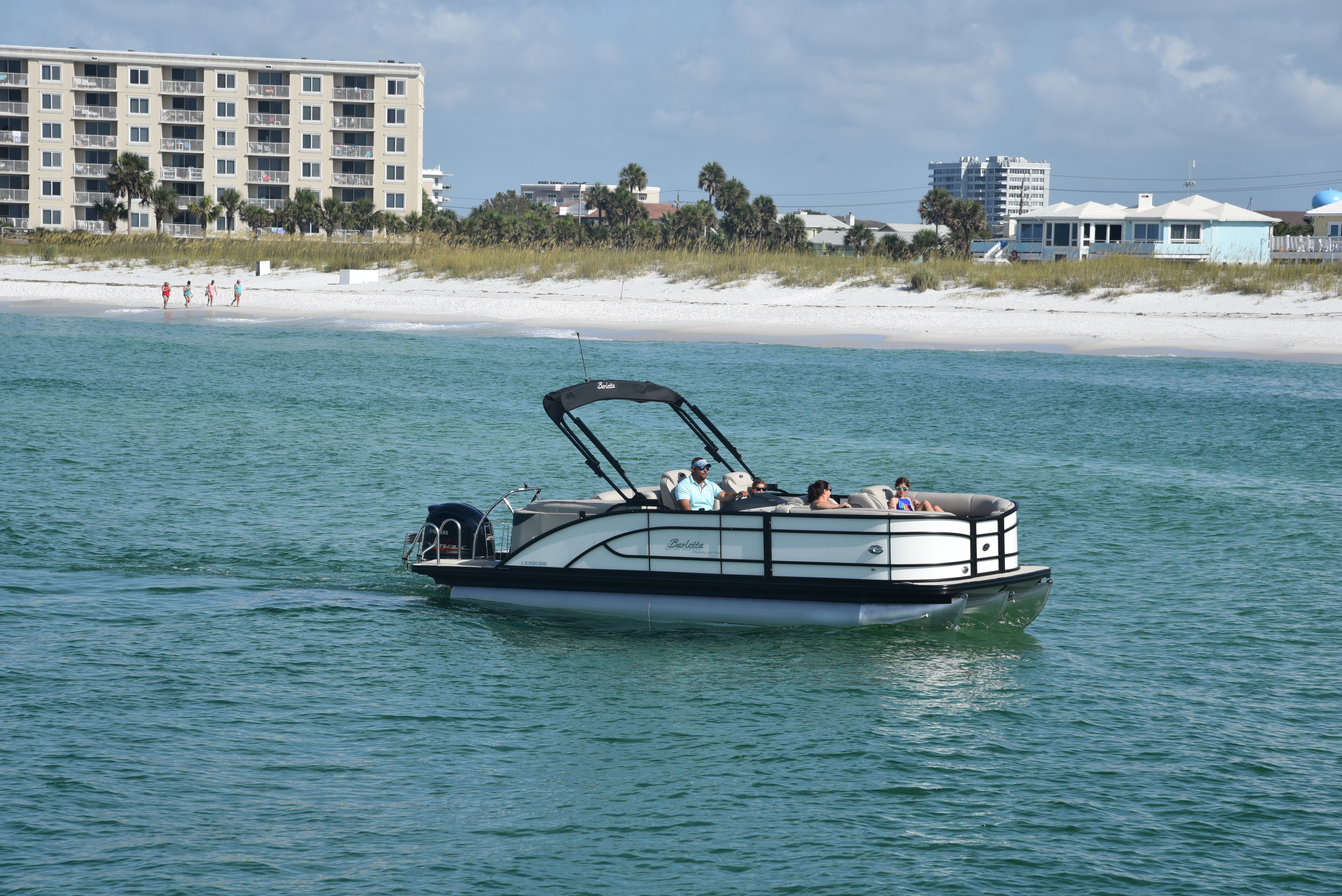What is Bottom Paint and Does My Boat Need It?
As a boat owner, you know that keeping the hull clean and clear of marine growth can be a chore. Depending on how long you keep the boat in the water can also make this process more cumbersome as buildup will get worse the longer the boat sits.
This is especially true if you don’t park your boat on a lift and it sits in the water while docked. Regardless of how many times you take the boat out to clean the exterior, marine growth and oxidation are inevitable.
If you boat in saltwater, this becomes more of an issue as saltwater speeds up the oxidation and electrolysis processes. So, what can you do for your boat to protect the hull from these elements?
Bottom paint is your answer. I’m going to give you a rundown of what bottom paint does for the integrity of your boat’s exterior and why it might be a good investment upon purchasing a boat.
What is Bottom Paint?
Bottom paint, or antifouling paint, is exactly what it sounds like. It’s a type of paint that is applied to the bottom, or the hull of a boat. This paint acts as a barrier of protection for the part of the boat that sits in the water.
Bottom paint can also be applied to the lower unit of a motor. Any part of the boat that will consistently sit in the water can be painted. That includes the motor and trim units.
Most boats aren’t equipped with bottom paint from the start. This is typically something you will have to add aftermarket once the boat is purchased. It can be a good idea if the boat is going to be sitting in the water for long periods.
What does Bottom Paint do?
As I just mentioned, bottom paint acts as a barrier on the hull of the boat. The formula in the paint actively wards off marine growth, therefore, keeping the hull cleaner which will lead to less discoloration.
Bottom paint also aids in the cleaning process as marine growth comes off of the paint easier than it would if the hull wasn’t painted. Don’t get me wrong, you will still have to clean the hull of the boat from time to time, you just won’t have to do it as frequently.
This will also add to the visual appeal of your boat as discoloration can stain and become permanent if the hull isn’t cleaned regularly. Bottom paint makes cleaning the exterior much easier.
Keeping the hull clear from marine growth will also contribute to better fuel efficiency and performance from the engine. For example, marine growth on pontoons can hinder the speed by 10 plus miles per hour. If you’re noticing a dip in the amount of speed you’re getting from the motor, it could be attributed to a buildup of marine growth on the hull.
By adding bottom paint to your boat, you are safeguarding yourself from issues like this. Some boats need more protection than others, so how do you know if bottom paint is right for you?
Who Should Add Bottom Paint to their Boat?
Again, bottom paint is rarely an option offered by the boat manufacturer. Most of the time, you will have to inquire about this option through your dealer. If they don’t offer bottom paint, they will more than likely be able to point you in the direction of a reputable place that does.
Now, who should spring for this feature? Although marine growth is prevalent in freshwater, it’s mainly recommended for those who boat in saltwater. It’s not a bad idea for anyone who’s boating in saltwater to have their hull painted but it’s mostly those who plan to leave the boat sitting in the water that should have it done.
Coastal areas usually see the most sunlight throughout the year. The more sun there is, the more growth happens on the seafloor. This means the hull is more susceptible to the buildup of marine growth. Bottom paint deters the growth from building up at a rapid rate due to its antifouling properties.
This type of growth on the hull can be detrimental as it can break through the gel coat of a fiberglass boat and permeate itself into the fabric of the boat. This can cause blistering which is an issue because it lets water into the fiberglass which causes delamination.
If the salt water breaks through due to delamination, it will eat away at the material of the hull. Once this happens, you’ve got a big problem on your hands. This is what you’re avoiding by having bottom paint applied regularly.
Saltwater also speeds up the process of oxidation which leads to discoloration of the hull. If you have a pontoon boat, you know how quickly oxidation happens when a boat sits in any type of water. Fiberglass is also susceptible to oxidation, so bottom paint is recommended for any type of boat.
It’s important to note that there will be different antifouling formulas depending on the material of the hull. Pontoons need a different type of bottom paint than wooden or fiberglass boats do. That’s because the type of paint reacts differently depending on what type of material it’s applied to.
How Often Does Bottom Paint Need to be Applied?
This answer can be different for everyone. For instance, if you’re someone who is hyper-aware of protecting your boat but you don’t let it sit in saltwater for long periods, your bottom paint will last longer.
Just the same, if your boat sits at the dock in water year-round and you pull it to clean the exterior once or twice a year, the paint will not last as long. Maybe the biggest factor in how long the paint will last is how it’s applied.
There are a few different application processes that installers can follow. Depending on the way it's done will contribute to how long it lasts. That’s why it’s critical to find a reputable source that is experienced and doesn’t cut corners when it comes to applying bottom paint.
All these factors make the ballpark time frame quite a large span of one season to five years. That said, the average lifespan of a well-done bottom paint job on a boat that regularly sits in saltwater is two to three years. That’s if you use the boat regularly and have the paint applied by a professional who does it the right way.
There are also options to have touch-ups done on spots that are accessible while the boat sits on the trailer. Touch-ups are sometimes necessary for areas that experience the most water friction such as the waterline on the hull.
Who to Call to have Bottom Paint Applied
As I mentioned, bottom paint is most popular in coastal areas. Talk to your dealer about having bottom paint applied before you take delivery of the boat. If they don’t offer the service, they should be able to help you find someone who does.
If you’re lucky, some manufacturers offer it as an option from the factory, your dealer will also be able to tell you that upon ordering the boat. Aside from those options, most boatyards are capable of applying bottom paint, so there should be someone in your area you can call to have this done.
What does Bottom Paint Cost?
You will typically find that bottom paint is priced per foot of the boat. This pricing can vary depending on where you’re located in the country and how readily available the type of paint your boat requires is.
Don’t be surprised to see a ballpark range of $50-$150 per foot. Again, pricing is dictated by many different factors. The process in which the paint is applied will also play a role here. The most important part of having bottom paint added to your boat is that you find a reputable source and they do it right.
Different Color Choices
When it comes to bottom paint, there are lots of color choices. The most popular colors that are applied most often are black and blue. If that’s not for you, there are plenty of others to choose from.
There is even a line of vivid colors available. Something to note, depending on what type of boat you have, you may be more limited on these options. For example, aluminum bottom boats take a special type of paint and for that reason, there are not as many choices for those vessels.
If Bottom Paint is for You
After considering all of the details above, I hope you have been able to figure out if bottom paint is something you’d like to have added to your boat. There are a few more items to be aware of if you decide to take the plunge.
Depending on the size of your boat and who is going to paint the boat, you should expect a ballpark time frame of 7-10 days from start to finish. Many factors that go into this such as the type of paint used as dry times will vary. The size of your boat and the dealer's backlog will also play a part.
You should be aware that two main types of bottom paint are ablative and hard paint. Talk to the tech who will be applying the paint about which type of paint is right for your boat.
It’s important to know that different states have different guidelines for bottom paint as well. This may play a part in what type of paint is available to you. These guidelines and regulations are in place to meet eco-friendly standards in your area.
Knowing this information about bottom paint should make your transaction quick and easy when signing up to have this procedure done. It could really pay off if you plan to keep your boat in saltwater for long periods.



